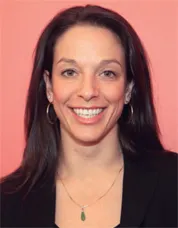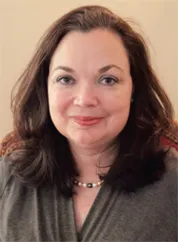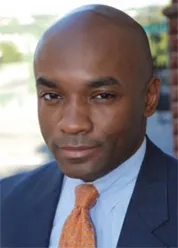A Special Day with Justice Sotomayor
When Associate Justice Sonia Sotomayor visited the Law School in January, students knew the rare opportunity that was at hand. They responded by greeting her like a rock star, even lining outside the Auditorium an hour before her talk began to grab seats closest to the stage.
For her part, Sotomayor, one of the court’s newest justices, didn’t disappoint. She spent almost all day at the Law School sharing stories from her rise to the high court and giving students a glimpse into the life of a Supreme Court justice. During a 90-minute question-and-answer session, Sotomayor dispelled commonly held ideas about the court, her colleagues, and herself. She also shared her thoughts on a diverse array of legal topics at a private lunch with Law School faculty and described her typical day to students in a Criminal Procedure class.
Students and faculty were struck by the justice’s thoughtful responses, as well as her warmth. “The lessons she had learned over the years were really interesting,” said Emily Tancer Broach, ’11. “She talked about service and how when you’re called to serve you should serve. That was inspiring for the whole school to hear for whatever context they want to be a lawyer one day.”
To say Sotomayor’s visit was one of the most anticipated Law School events of the year would be an understatement. A lottery system determined which lucky students sat in the Auditorium, where Sotomayor would be, or the Courtroom, where an audio hookup allowed an overflow crowd to listen to the session. In the moments before she entered, a hush swept the room and students eagerly eyed the Auditorium’s entrance. Dean Michael Schill stoked the anticipation in his introduction with a description of Sotomayor’s diverse career as a prosecutor, in private practice, as a federal judge, and as an appellate judge before joining the Supreme Court.
Appearing at ease in front of the crowd, Sotomayor’s answers reflected the breadth of her experience. Her most interesting comments, of course, were about her time on the Supreme Court.
The best advice she says she’s received was from Justice David Souter, whose retirement in 2009 precipitated her appointment to the court. A few days into her tenure, Souter told Sotomayor to remember that her colleagues on the court were people of goodwill who were committed to law and the Constitution. Once he reached that realization, Souter said, he had a much easier time disagreeing with them. Sotomayor told students that this advice has made her stop, listen, and be more respectful of other justices’ viewpoints.
One difference in viewpoints surfaced when Professor David Strauss, who led the question-and-answer session, asked Sotomayor about originalism, a principle of interpreting the Constitution by trying to discern the original intent of its authors. Sotomayor said she finds it difficult to agree with a point of view that relies solely on the Constitution and discards the last two hundred years of legislation. “I have one colleague who doesn’t believe in legislative history,” she said. To her, however, legislative history is “like a toolbox” that provides framework for solutions to vexing legal questions. “I don’t see [originalism] as a day-to-day approach that gives you a clear answer,” Sotomayor said. She’s been surprised by how burdensome the Supreme Court’s decision-making process has felt, she said. As a district court and appellate judge, Sotomayor took solace in knowing that close cases would reach the Supreme Court for final decisions. Now, she has the responsibility of being a part of that final line of judgment. She also had not anticipated how much she would sense the impact of the Supreme Court’s decisions on groups in society.
To handle this, she relies on advice she received as a new district court judge. One of her fellow district judges told her of another judge that had retired because he couldn’t sleep at night second-guessing decisions he’d made. The point of that story, Sotomayor said, was to discourage her from doing the same.
While she internalizes the importance of her position, she said, “I’m not tortured. I can only do what my colleague told me then.”
Sotomayor had advice of her own to give to attorneys and students. Attorneys preparing cases for the Supreme Court should take a broad approach when deciding how to form their arguments, she said. They should also be aware that the justices will decide the case keeping in mind its potential impact in the future.
In response to a question from Seth Oranburg, ’11, Sotomayor said oral arguments before the Supreme Court don’t usually sway the justices to being in favor of a particular side, but an attorney can lose a justice’s vote by not correcting a factual misunderstanding or by not keeping the justices on track. Oral arguments are a time for justices to air their concerns via questions to an attorney, and time for an attorney to assuage those concerns. “If you’re a lawyer and not welcoming questions, then you’re not doing your job,” she said.
To students, Sotomayor gave two orders: take time during law school for casual interactions with your classmates and find your passion. Sotomayor recalled that her best moments in law school were when she and her classmates sat in a lounge talking and debating the issues of the day. Law students today book their schedules full of obligations that they think will look good on their resumes, she said. “Do you stop and breathe?” Sotomayor asked. “Do you stop and talk for the sake of talking? Do you even see a movie?” Sotomayor said she passes over law clerk resumes that are packed with a thousand entries in favor of resumes that demonstrate a passion. Those people who show that extra spark and who can reach within themselves to give extra effort are the ones she wants to hire, she said.
Clinical professor Craig Futterman asked Sotomayor about the burden of being an inspiration, saying his 14-year-old daughter admires Sotomayor for being the first woman of color on the Supreme Court. Did Sotomayor feel a special responsibility when it came to issues of race, class, or gender? he asked.
People have an expectation that her race will lead her to rule in certain ways, she said. But she doesn’t approach the judging process as a woman of color who needs to make decisions that would help special groups of people. Instead, she said, “I come to the process of judging understanding that we are a better society because we have a rule of law.” Among other questions, students asked Sotomayor for advice for new attorneys, her thoughts on the confirmation process, and how society influences decisions. One of the more provocative questions came from Nik Abraham, JD/MBA ’11, who asked if Sotomayor could describe a personal failure that may have motivated her.
“I have spent most of my life in fear of failure,” she told him. That, she said, was what has motivated her to do the best in everything she faced. Still, she’s been turned down for jobs—some deservedly, she said—and has had failed personal relationships. Her first year as a district court judge was one of the most difficult times in her life as she adjusted to being on the other side of the bench, she said.
Later, Abraham said Sotomayor’s reply helped him connect with her on a more personal level. “Her response was phenomenal,” Abraham said. “I thought she was extremely frank, very honest.”
After the Q&A, Dean Schill gave the justice a tour of the Law School and took her through the Green Lounge and the library. Sotomayor asked questions about the building’s architecture, and was curious about the Law School’s policies and day-to-day functioning.
At lunch with faculty, Sotomayor sat with the Law School’s brightest minds, experts in bankruptcy law, international law, legal history, and—of course—constitutional law. Sotomayor graciously answered their questions, addressing the value of consensus on the Supreme Court, the role of international law, her thoughts on interdisciplinary legal education, and whether she and her colleagues actively read law review articles. Her answer on the last point pleased the faculty.While most of the other justices don’t consult law review articles, Sotomayor said that she does, particularly when a case involves an area of law that is outside her expertise.
“The justice’s view that legal scholarship can actually offer solutions was exciting, as was the suggestion that what law professors write can bolster the reasoning of the justices,” said Assistant Professor Alison LaCroix. “In the constitutional law area, it often seems as though the Court is setting the interpretive agenda, so it was encouraging to hear that the channels of communication between the Court and the academy run both ways.”
Sotomayor chose to visit Chicago Law in part because of her connection to Bernard Harcourt, the Julius Kreeger Professor of Law and professor and chair of the Political Science Department. Harcourt’s father, Edgar A. Harcourt, BA ’49, LLB ’52, was a partner at Pavia & Harcourt, where Sotomayor was hired for her first law firm job and was partner until her appointment in 1992 to the federal bench. At the end of her day at the Law School, Sotomayor cotaught a class because of her connection to another Chicago Law professor.
When Sotomayor was an appellate judge, she committed to serve as a guest lecturer for Assistant Clinical Professor Alison Siegler’s Criminal Procedure II course. Soon thereafter, though, she was nominated to the Supreme Court, and she was unable to come to Chicago as planned. Years later, Sotomayor remembered this promise and initiated plans to follow through on it after she scheduled a visit to the Law School. That’s how about 60 students in Siegler’s class gained a private audience with the justice. Sotomayor gave students a glimpse into her daily life, beginning with what dominates: “Reading is the life of a justice,” she told them.Weekends are often spent reading bench memos. In a typical week, she spends her days reading briefs, prior Supreme Court cases, and opinions drafted by other chambers, in addition to opinions generated in her own chambers.
She spends more time with her fellow justices than she ever spent with colleagues on the district or appellate courts. Sotomayor said they eat lunch together after every argument and after every Friday conference, the justices’ weekly meeting. Other time is spent meeting visitors of all kinds—heads of state, athletes, writers. “The court is a public body, so we have a public educational role to play as well,” she said.
When she has free time, Sotomayor likes visiting law schools and students at all levels. On her trip to Chicago, for instance, she spent some time meeting with children at a grade school.
Working on the Supreme Court was a return, in part, to being a lawyer again, Sotomayor said. In her time on the Second Circuit, she did most of her persuading in writing. “On the Supreme Court, we talk a lot. There is real dialogue and it’s necessary,” she said. In their Friday conferences, the justices take turns saying why they’re inclined to vote on a case in a certain way, starting with Chief Justice John Roberts followed by the other justices in order of seniority. After some discussion among the group, the justices stake out their positions on an issue. Sotomayor said she uses the same advocacy skills she used as a lawyer to defend her position in the Friday conference and to persuade others to join her.
Many of the Criminal Procedure students’ questions for Sotomayor centered on prosecutorial discretion, a topic they recently studied in class. Hillary August, ’12, asked whether prosecutors should take defendants’ personal details into account or whether all defendants who commit the same crime should be treated alike. Sotomayor said it’s unrealistic to tell prosecutors that they can’t consider a defendant’s individual characteristics, but they should make sure they’re treating like people alike to avoid creating racial disparities. She also said that police and prosecutors need to be sensitized to potential racial and gender disparities in the system and need to try to prevent them from coming into play.
Embassie Susberry, ’12, asked if prosecutors should have more or less discretion. That led Sotomayor to recall a time when she was a prosecutor and was faced with a challenging case. The defense attorney approached Sotomayor and said the defendant was a special-needs student who was picked out of a lineup by the 80-year-old victim because he was the only person in the lineup wearing a black jacket, the same color jacket as the perpetrator’s. In addition, the defense attorney told Sotomayor, the timeline of events made it impossible for the defendant to have had time to commit the crime. Sotomayor did some investigating on her own and corroborated what the attorney had told her. She decided to seek dismissal of the charges.
“I went to my supervisor, who challenged me,” she told the class. “He said, ‘Let the jury decide.’ I said, ‘No, I don’t think the evidence is enough.’” In the end, her supervisor allowed her to ask for the case’s dismissal, but only because he thought Sotomayor had proven to him that it should be done. “You have to be cognizant that you serve a role in the justice system as a prosecutor,” she told students. Sotomayor also answered several questions about judicial discretion at sentencing. She said that she has grown to understand that the most important issues are the sentencing issues, because the vast majority of defendants in the criminal justice system plead guilty. She concluded her talk by urging students thinking about careers in the criminal law field to consider criminal defense as well as prosecution, and by talking about how important it is that federal judges be drawn from the ranks of defenders and prosecutors alike.
Sotomayor left the Law School toting a Chicago Law hooded sweatshirt with her name printed on the back, a small token of appreciation for sharing her valuable time and thoughts. And students were left with memories that will stay with them for years to come.


